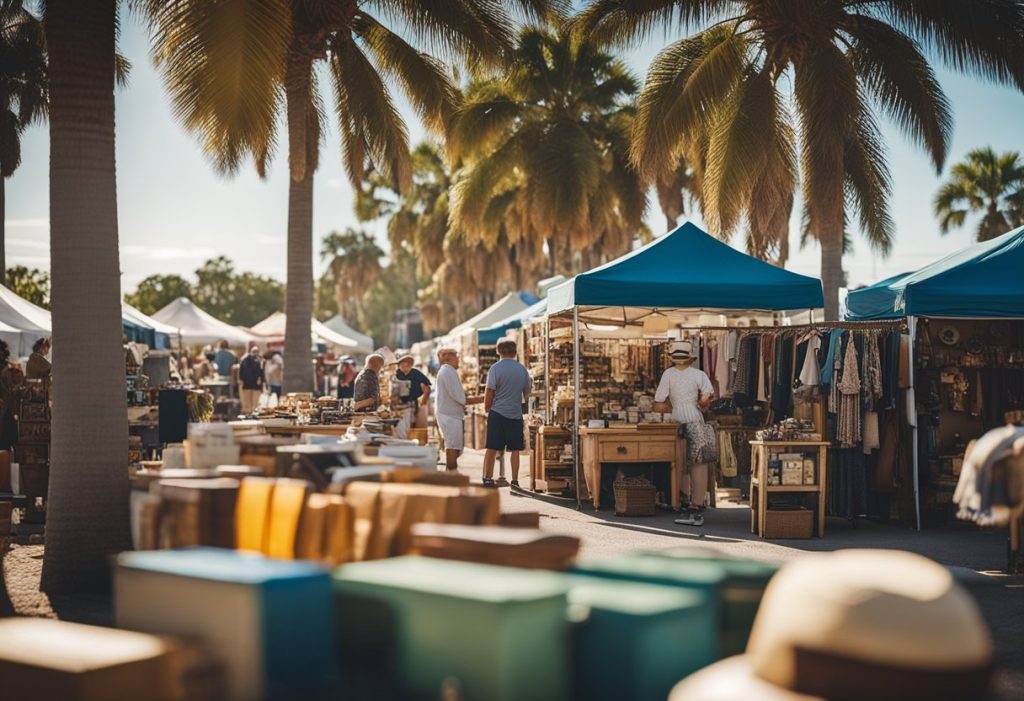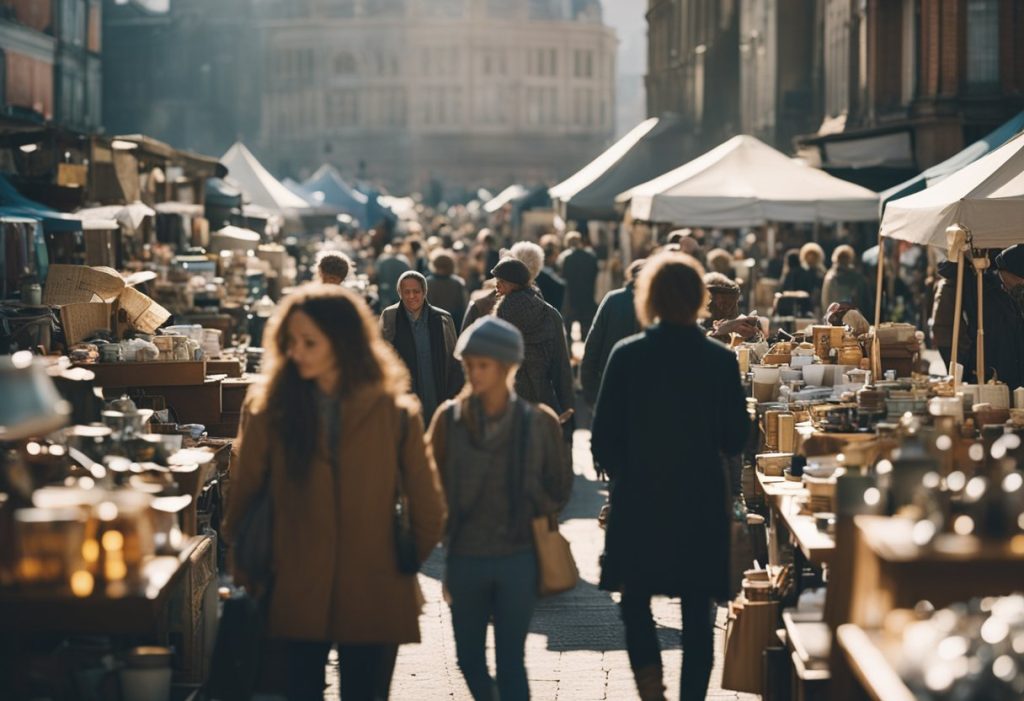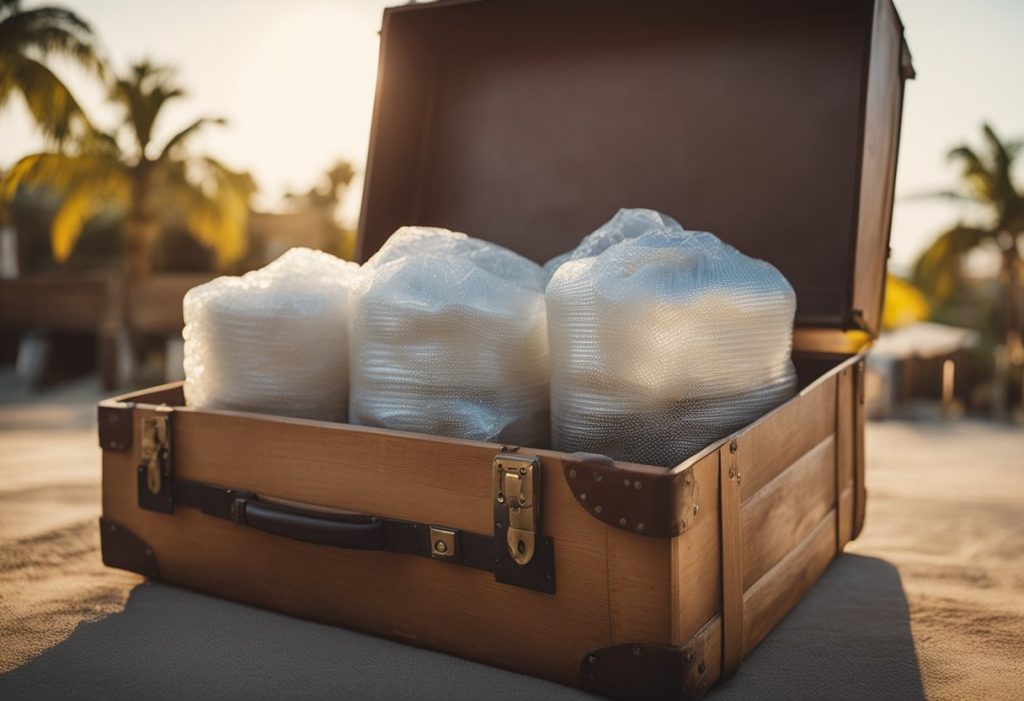Florida’s Vintage Flea Markets: Tips for Finding Treasures
If you’re a fan of vintage finds and unique antiques, then Florida’s flea markets are the perfect place for you. With a rich history and diverse character, Florida is home to some of the best flea markets in the country. Whether you’re a seasoned collector or a first-time treasure hunter, these vibrant bazaars offer a treasure trove of vintage finds, fresh local produce, and an array of other goods.

From Webster’s Westside Market to the Visitors Flea Market in Kissimmee, there are plenty of options to choose from. But with so many vendors and stalls, it can be overwhelming to navigate through the crowds and find the best deals. That’s why we’ve put together some tips and tricks to help you make the most of your vintage flea market experience in Florida. Whether you’re looking for vintage clothing, unique accessories, or antique furniture, we’ve got you covered. So grab your shopping bags and get ready to embark on a treasure hunt that you won’t forget!
Understanding Flea Markets in Florida
If you’re new to the world of flea markets, you might be wondering what exactly they are and what makes them so special. A flea market is a type of bazaar that typically sells secondhand goods, antiques, collectibles, and other vintage items. In Florida, flea markets are particularly popular due to the state’s rich history and diverse culture.
One of the unique aspects of flea markets in Florida is the range of items you can find. From vintage clothing and jewelry to antique furniture and home decor, there’s something for everyone. Many flea markets also sell fresh produce, handmade crafts, and other unique items that you won’t find anywhere else.
When it comes to shopping at flea markets, it’s important to keep a few things in mind. First and foremost, be prepared to haggle. Many vendors are willing to negotiate on price, so don’t be afraid to ask for a lower price if you think an item is overpriced.
Another tip is to arrive early. The best items tend to sell quickly, so arriving early gives you a better chance of finding that perfect vintage treasure. Finally, be sure to bring cash, as many vendors don’t accept credit cards.
Treasure Hunting Tips
Are you planning a trip to Florida’s vintage flea markets? Here are some treasure hunting tips to help you make the most of your experience:
1. Come Prepared
Make sure you come prepared with comfortable shoes and clothing, sunscreen, and a hat. It can get hot in Florida, so it’s important to stay cool and hydrated. Bring a reusable water bottle and snacks to keep you energized throughout the day.
2. Arrive Early
The early bird catches the worm, or in this case, the best finds. Arrive early to beat the crowds and get first dibs on the treasures. You’ll also have more time to browse and negotiate with vendors.
3. Bring Cash
Many vendors may not accept credit cards, so it’s important to bring cash. Make sure to bring small bills and change for easier transactions.
4. Know What You’re Looking For
Do you have a specific item in mind? Make a list and bring it with you. This will help you stay focused and avoid getting overwhelmed by all the options.
5. Negotiate
Don’t be afraid to negotiate with vendors. Many are willing to lower their prices, especially if you’re buying multiple items. Just be respectful and polite when making an offer.
6. Check for Quality
Before making a purchase, make sure to check the quality of the item. Look for any damage, wear and tear, or missing pieces. If you’re buying furniture, make sure it’s sturdy and well-built.
7. Have Fun
Most importantly, have fun! Treasure hunting at Florida’s vintage flea markets is a unique and exciting experience. Enjoy the atmosphere, meet new people, and discover hidden gems.
Florida’s Vintage Flea Markets
These vibrant bazaars are a testament to the state’s rich history and diverse character. Here are some of the best flea markets in Florida that you should visit:
Renninger’s Antique Center
Renninger’s Antique Center is a 117,000 square foot indoor market located in Mount Dora, Florida. The market is open every weekend, and it features over 200 vendors selling antiques, vintage items, and collectibles. You can find everything from furniture, jewelry, and clothing to toys, books, and artwork. Renninger’s Antique Center also hosts special events throughout the year, such as antique shows, vintage car shows, and flea markets.
Webster Westside Flea Market
Webster Westside Flea Market is one of the largest outdoor flea markets in Florida. It covers 35 acres of land and features over 2,000 vendors selling a wide range of items, including antiques, collectibles, clothing, jewelry, and fresh produce. The market is open every Monday, and it attracts thousands of visitors from all over the state. Webster Westside Flea Market is a great place to find unique treasures and bargains.
Red Barn Flea Market
Red Barn Flea Market is a family-owned business that has been operating in Bradenton, Florida, since 1981. The market covers 80,000 square feet of indoor space and features over 600 vendors selling a variety of items, including antiques, jewelry, clothing, and fresh produce. Red Barn Flea Market is open every Saturday and Sunday, and it offers a fun and friendly shopping experience.
This is a good option for those who stay close to the Siesta Key Beaches.
Daytona Flea and Farmers Market
Daytona Flea and Farmers Market is located in Daytona Beach, Florida, and it covers 32 acres of land. The market features over 1,000 vendors selling a wide range of items, including antiques, collectibles, clothing, jewelry, and fresh produce. Daytona Flea and Farmers Market is open every Friday, Saturday, and Sunday, and it offers a unique shopping experience with live entertainment, food vendors, and special events.
Deciphering Real Vs Fake Antiques
When shopping at vintage flea markets in Florida, it’s important to know how to spot real antiques from fake ones. Here are some tips to help you decipher real vs fake antiques:
Look for Imperfections
Real antiques often have imperfections that add to their charm and authenticity. Look for signs of wear and tear, such as scratches, dents, and faded paint. If an item looks too perfect, it may be a fake.
Check the Materials
Pay attention to the materials used in the antique. For example, real ivory is smooth and has a slightly yellowish tint, while fake ivory tends to be rough and white. You can also use a hot needle test to determine if an item is made of ivory or plastic. If the needle goes through the material easily, it’s likely fake.
Do Your Research
Before heading to a vintage flea market, do some research on the types of antiques you’re interested in. This will help you spot fakes more easily. You can also bring a reference book or use your smartphone to look up information on the spot.
Ask the Seller
Don’t be afraid to ask the seller questions about the antique. A reputable seller will be happy to provide you with information on the item’s history and authenticity. If the seller seems hesitant or avoids your questions, it may be a red flag.

Negotiating Prices at Flea Markets
When it comes to flea markets, haggling is a common practice. If you’re new to the scene, it can be intimidating to ask for a lower price, but it’s worth it to try. Most vendors expect it and are open to negotiation.
One strategy is to start by complimenting the item and then asking what the best price they can offer is. If the price is still too high, you can counter with a lower price and see if they’re willing to meet you in the middle.
It’s important to keep in mind that large vendors may have higher prices than smaller ones, so be prepared to negotiate accordingly. Additionally, if you’re purchasing multiple items from the same vendor, it’s worth asking if they can offer a discount for buying in bulk.
Another tip is to look for items that have been marked down or are on clearance. These items may have been sitting on the vendor’s shelf for a while and they may be more willing to negotiate on the price to get rid of them.
If you’re not comfortable with negotiating, you can still find good deals by looking for items that are priced fairly or are already marked down. It’s also a good idea to research the value of the item you’re interested in before attending the flea market so you have an idea of what a fair price would be.
Packing and Transporting Finds Safely

After a long day of treasure hunting at Florida’s vintage flea markets, you might have found some unique and valuable items that you want to take home with you. However, packing and transporting fragile or bulky items can be challenging. Here are some tips to help you pack and transport your finds safely.
Bring Packing Materials
It’s always a good idea to bring some packing materials with you when you go to a flea market. You can bring bubble wrap, packing paper, packing tape, and boxes of different sizes. This way, you can pack your items on the spot and avoid the risk of damaging them during transportation.
Use Proper Packing Techniques
When packing fragile items such as glassware or ceramics, wrap each item carefully with bubble wrap or packing paper. Then, place them in a box with packing peanuts or crumpled paper to prevent them from moving around during transportation. For larger items such as furniture, use moving blankets or furniture pads to protect them from scratches or dents.
Secure Items in Your Vehicle
When transporting your finds, make sure to secure them properly in your vehicle. For smaller items, you can place them in the trunk or back seat and secure them with seat belts or bungee cords. For larger items, you may need to rent a truck or van to transport them safely.

I am a father of a 2 energetic boys. If one of them accidently sleeps past 6am, the other one make sure he will wake up. Traveling is our favorite activity as a family and we try to do it almost every time school is out. Our favorite location is Florida (coming from Baltimore the warm weather is usually a blessing).

